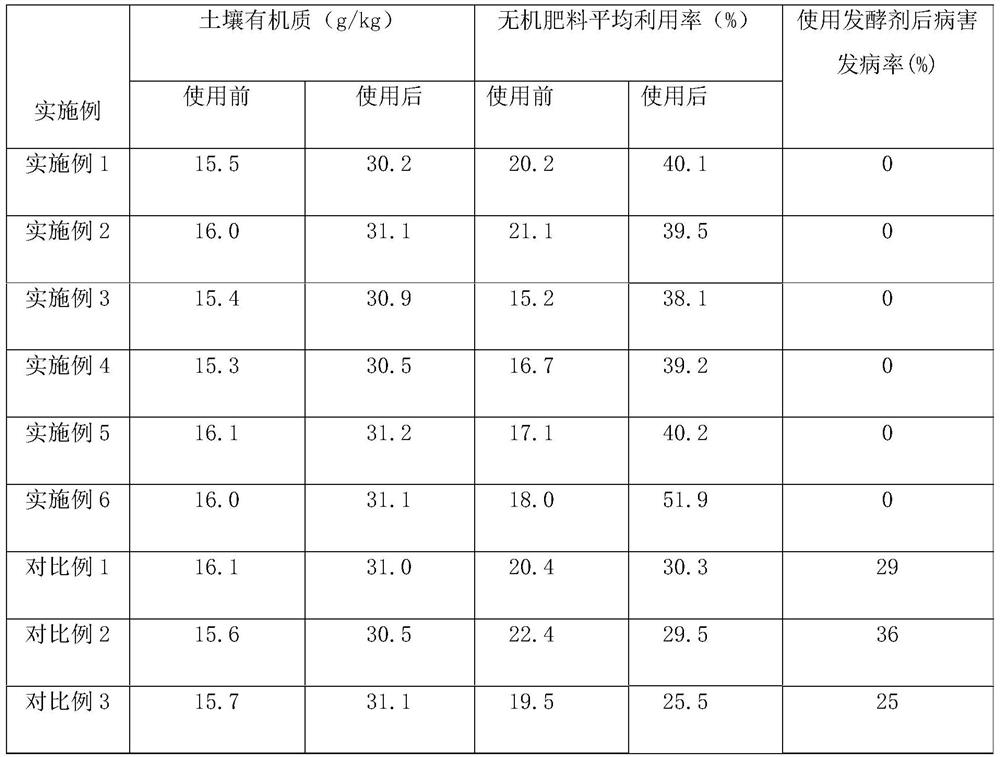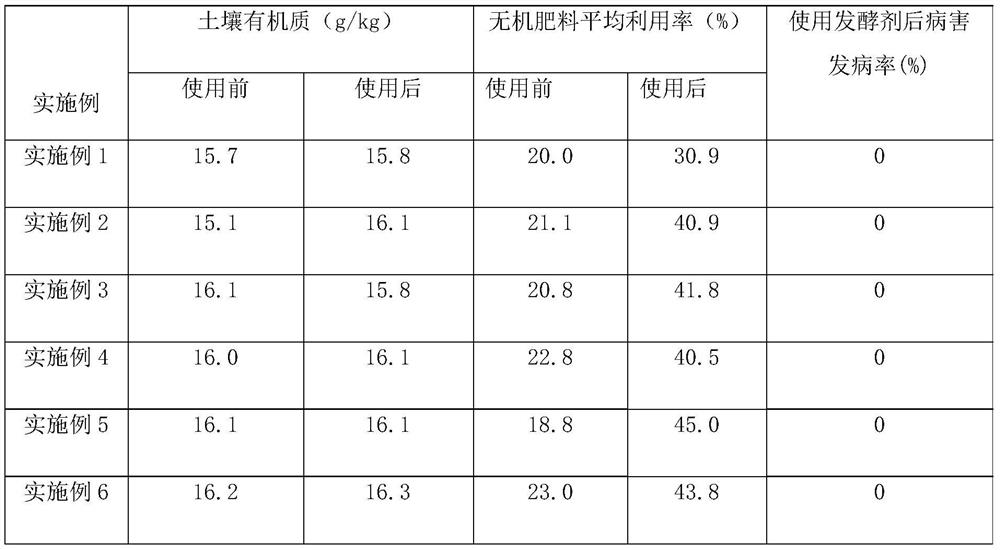Organic-inorganic combined plant residue leavening agent as well as preparation method and use method thereof
A technology of plant residues and leavening agents, applied in the preparation of organic fertilizers, organic fertilizers, inorganic fertilizers, etc., can solve the problems of easy nitrogen deficiency, achieve the effects of changing application methods, improving utilization rates, and high social value
- Summary
- Abstract
- Description
- Claims
- Application Information
AI Technical Summary
Problems solved by technology
Method used
Image
Examples
Embodiment 1
[0042] This example provides a solid powder dosage form organic-inorganic combined plant residue starter, the organic components include the following components in mass percentages: 3% fulvic acid, 30% corn stalk fermented and decomposed materials, 100 mesh modified opal Powder 10%, urea 10%, washing powder 0.1%, microbial strain powder (the mass ratio of Trichoderma harzianum, Paecilomyces lilacinus and Disporosporum thermophilica is 5:5:5) 30%, edible fungus bran 9.9%, tomato residue 100 mesh powder 7%.
[0043] The preparation method of the modified opal powder is as follows: adding dilute nitric acid solution with a concentration of 5 mol / liter to the opal to react for 2 hours, drying and pulverizing to obtain the modified opal powder.
[0044] The preparation method of the fermented and decomposed material of corn stalks is as follows: crush the corn stalks until the length is less than one inch, add water and mix evenly, then add hydrogen peroxide until no bubbles are g...
Embodiment 2
[0049] This example provides a solid powder dosage form of an organic-inorganic combined plant residue starter, the organic components include the following components in mass percentages: 5% fulvic acid, 20% fermented and decomposed materials of sweet potato vines, 100 mesh modified opal Powder 20%, ammonium sulfate 10%, soap powder 0.5%, microbial strain powder (the mass ratio of Trichoderma harzianum, Paecilomyces lilacinus and Disporosporum thermophilica is 1:2:5) 30%, edible fungus Bran 10%, tomato residue 100 mesh powder 4.5%.
[0050] The preparation method of the modified opal powder is as follows: adding dilute nitric acid solution with a concentration of 6 mol / liter to the opal to react for 1.5 hours, drying and pulverizing to obtain the modified opal powder.
[0051] The preparation method of the fermented and decomposed material of sweet potato vines is as follows: crush the sweet potato vines until the length is less than one inch, add water and mix evenly, then a...
Embodiment 3
[0056] This example provides a solid powder dosage form organic-inorganic combined plant residue starter, the organic components include the following components in mass percentages: 10% fulvic acid, 40% wheat bran fermented and decomposed materials, 100 mesh modified Opal powder 10%, ammonium nitrate 20%, washing powder 0.5%, microbial strain powder (the mass ratio of Trichoderma harzianum, Paecilomyces lilacinus and Sporiospora thermophilica is 2:3:5), edible Bacteria chaff 4.5%, tomato residue 100 mesh powder 5%.
[0057] The preparation method of the modified opal powder is as follows: adding dilute nitric acid solution with a concentration of 7 mol / liter to the opal to react for 1 hour, drying and pulverizing to obtain the modified opal powder.
[0058] The preparation method of the fermented and decomposed wheat bran material is as follows: crush the wheat bran until the length is less than one inch, add water and mix evenly, then add hydrogen peroxide until no bubbles a...
PUM
 Login to View More
Login to View More Abstract
Description
Claims
Application Information
 Login to View More
Login to View More - R&D
- Intellectual Property
- Life Sciences
- Materials
- Tech Scout
- Unparalleled Data Quality
- Higher Quality Content
- 60% Fewer Hallucinations
Browse by: Latest US Patents, China's latest patents, Technical Efficacy Thesaurus, Application Domain, Technology Topic, Popular Technical Reports.
© 2025 PatSnap. All rights reserved.Legal|Privacy policy|Modern Slavery Act Transparency Statement|Sitemap|About US| Contact US: help@patsnap.com



